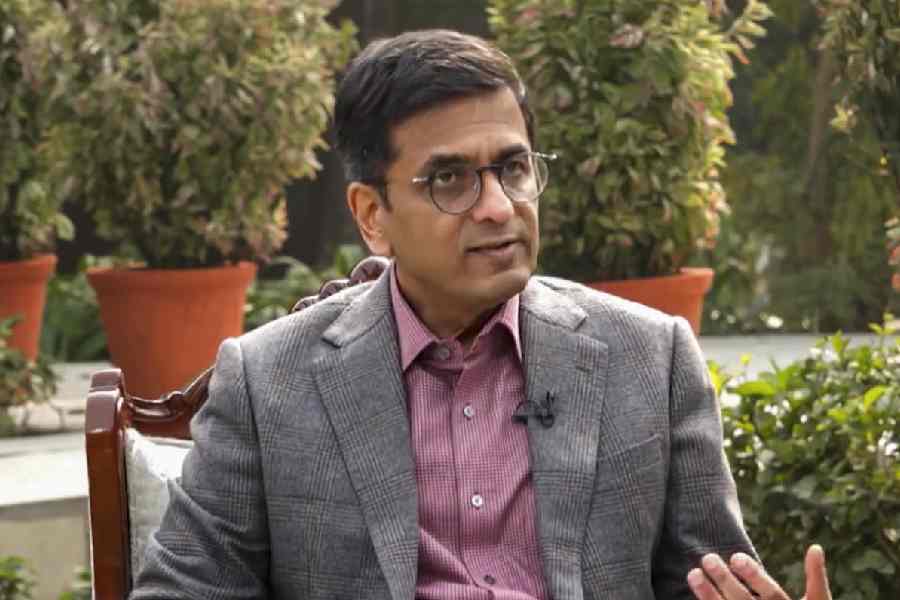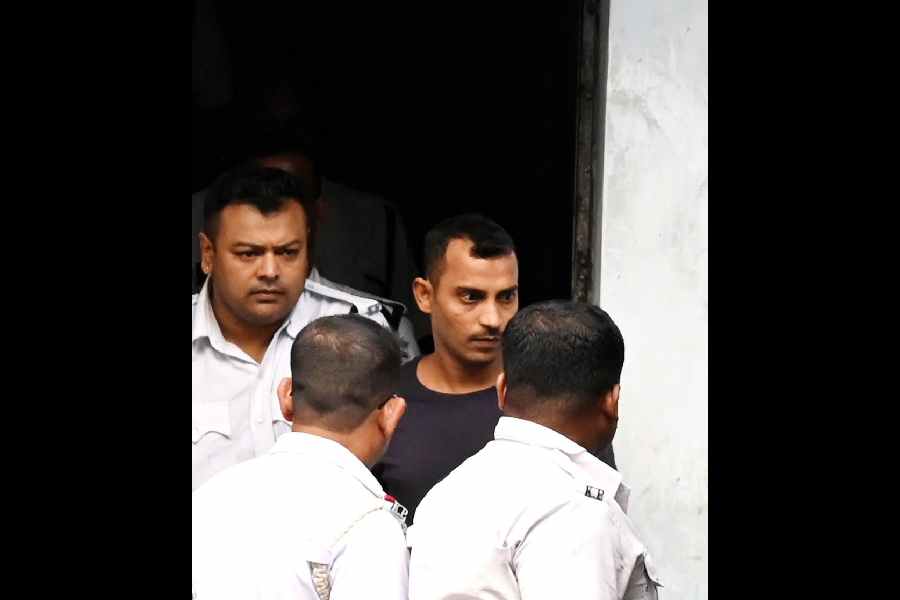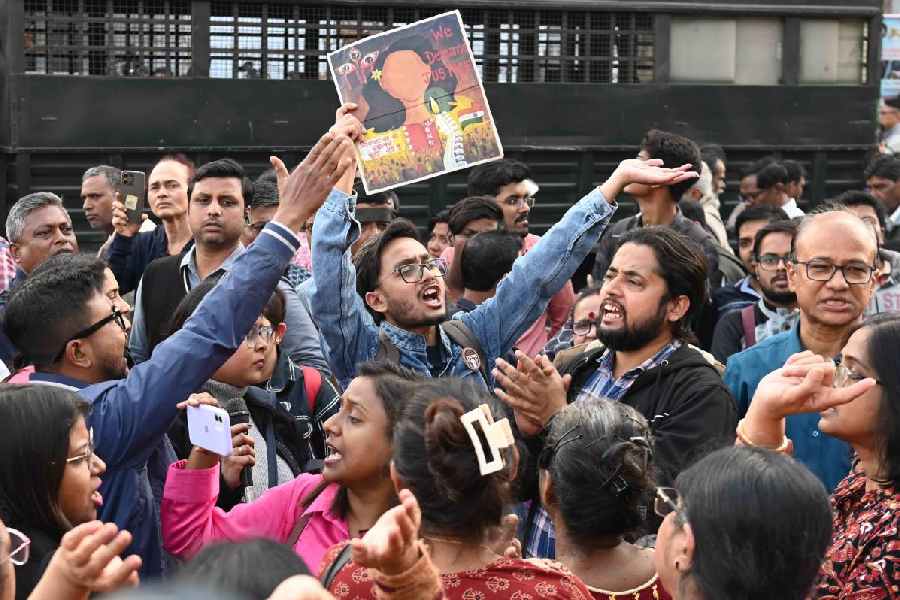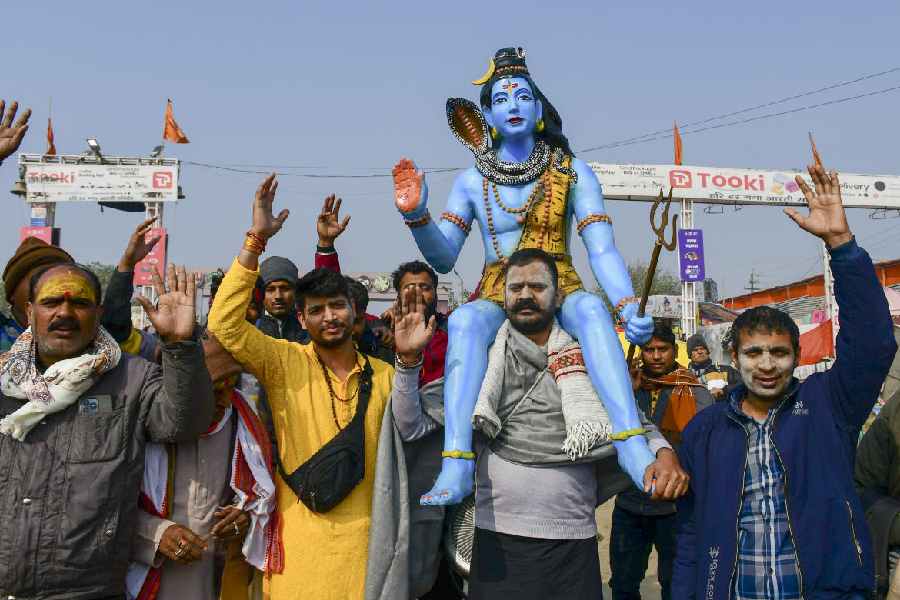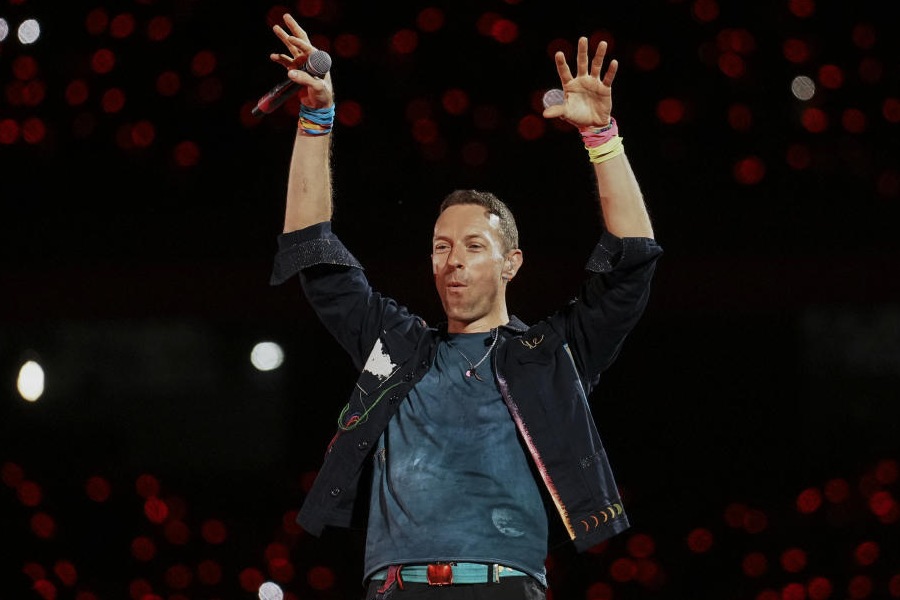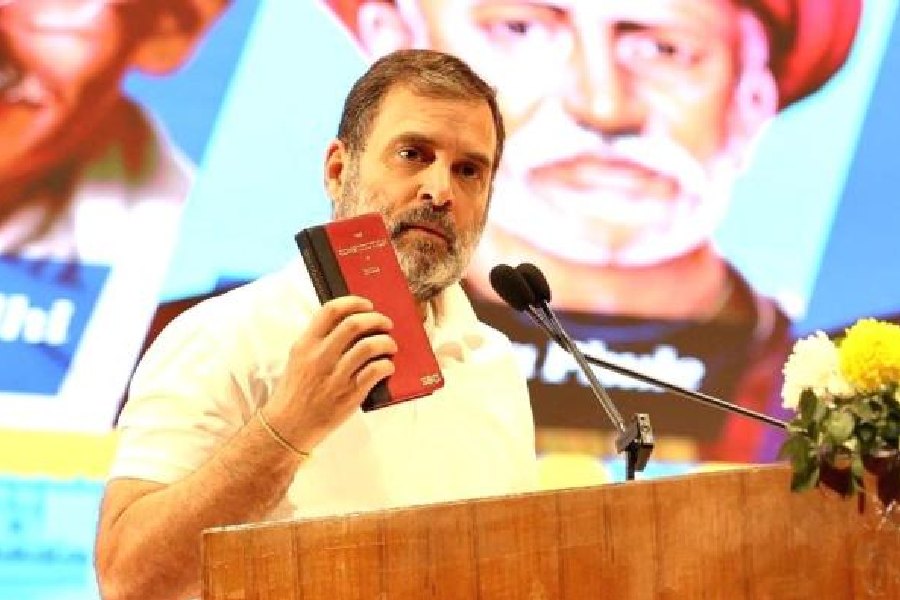Like most of my readers, I begin the day by reading the newspapers, in my case online and then in print. On Sunday, the first story I read was a report in the web edition of The Indian Express on a visit by the Chief Justice of India, D. Y. Chandrachud, to some Hindu temples in Gujarat, including the celebrated shrine in Somnath. The photograph accompanying the story captured the Chief Justice and his wife reverentially praying in an equally hallowed place of worship for Hindus, the Dwarkadhish temple.
The report contained these lines: “Justice Chandrachud said that he had started visiting various states ‘inspired by the life and ideals of Mahatma Gandhi’ to understand challenges facing the judiciary and to identify solutions, adding that his two-day Gujarat visit was part of the same effort.” The reference to Gandhi intrigued me, since I have spent many decades studying the life and legacy of the Mahatma.
Gandhi would have approved of any Indian — rich or poor, famous or obscure, man or woman — seeking to get to know the country and its people better. But what would he have thought of a serving Chief Justice making public visits to temples, and getting himself photographed and giving interviews about it in the process? Gandhi himself virtually never went to a Hindu temple — one of the very few exceptions he made was when he visited the Meenakshi temple in Madurai in 1946, after the shrine had finally, belatedly, allowed Dalits to enter its premises. Though Gandhi described himself as a Hindu, his chosen mode of worship was the inter-faith meeting, held on open ground, where Hindus, Muslims, Parsis, Sikhs, Jains and Christians would pray together, with verses of all their scriptures being read. That was his original and deeply moving way of affirming the principle that India belonged to all faiths equally.
Gandhi may not have wished or expected the Chief Justice of India to follow him and hold inter-faith prayer meetings. And nor should we. One of the most devout Hindus I myself know is a former Chief Justice of India, who begins his day and ends it with prayer and meditation. This he does, however, in a puja room in his own house. It is quite possible that, this former CJI occasionally visited temples, but surely never in a public manner, offering himself to be photographed. And he would certainly not have done it at a time like this, ten days before the inauguration of the new temple in Ayodhya, in a spectacular ceremony that shall be a mark not so much of Hindu piety, but of Hindutva majoritarianism.
The report also contained some other remarks made by the Chief Justice, which bear thinking about. I quote: “Referring to the dhwaja [flag] atop Dwarka and Somnath temples which he visited during his two-day visit to Gujarat, the CJI said, ‘I was inspired this morning by the dhwaja at Dwarkadhish ji, very similar to the dhwaja which I saw at Jagannath Puri. But look at this universality of the tradition in our nation, which binds all of us together. This dhwaja has a special meaning for us. And that meaning which the dhwaja gives us is — there is some unifying force above all of us, as lawyers, as judges, as citizens. And that unifying force is our humanity, which is governed by the rule of law and by the Constitution of India,’ he said.”
I presume the Chief Justice has been accurately quoted. If he has, I must say, with due respect, that his interpretation of our ancient and modern history does not bear critical or indeed moral scrutiny. For it is emphatically not the case that the “dhwaja” which has traditionally flown above Hindu temples has served to bind “all of us together” in a common humanity. In fact, for the bulk of their existence these shrines have not even bound all Hindus together. For, as the Chief Justice surely knows, for much of recorded history Hindu temples grievously discriminated against Dalits. The head priests of the most famous temples did not allow them to worship inside its premises. The Hindu religious tradition also discriminated against women, forbidding them from praying when menstruating. (Dalits and women were also discriminated against in many other ways — in terms of economic and political power for example).
The Chief Justice says he is inspired both by Mahatma Gandhi on the one hand and by the tradition represented by the temples in places like Dwarka and Puri on the other. I would like to remind him that when, after Gandhi’s anti-untouchability campaign, some nationalists proposed a Temple Entry Bill in the colonial legislature, the Sankaracharya of Puri himself wrote to the viceroy that allowing Dalits and Savarnas to pray together “will really mean the sounding of the Death-knell of all possibilities for Sanatanists to lead quiet and peaceful lives of Spirituality according to the dictates of their Religion and their Conscience’.
Contrary to what the Chief Justice implies, there is a vast gap between the ideals of the orthodox Hindu tradition and the ideals that undergird our Constitution. Indeed, the Constitution is in good part a product of the tireless work of social reformers like Gandhi, Ambedkar, Savithri and Jotiba Phule, Gokhale, Ranade, and many others, to challenge forms of discrimination encoded in Hindu scripture, and practiced in everyday life.
Notably, even after the Constitution abolished untouchability, the most famous temples in the Hindu tradition, such as Badrinath and Puri, continued to practice it for decades afterwards.
The treatment of women as inferior to men was also doggedly held on to by the Hindu orthodoxy well after 1950. A report from as late as 1988 mentions the Puri Sankaracharya as defending the practice of sati and as saying that women and Dalits had no right to read or interpret the Vedas.
It is true that no tradition is unchanging. However, it is quite likely that places like Puri and Dwarka would still have held on in toto to their anti-democratic and anti-egalitarian views had it not been for the Phules, Gandhi, Ambedkar, and the like, challenging caste discrimination on the ground — and had it not been for the Constituent Assembly of India, under Ambedkar’s direction, rejecting the Manu Smriti in favour of a democratic and egalitarian Constitution. Therefore, for the Chief Justice of India to claim a congruence between the flag ‘that has traditionally flown above Hindu temples’ and the modern text that is the Constitution of India is tendentious and misleading (to say the least).
I referred to the photograph accompanying the story. It shows him dressed in a kurta coloured saffron. But even if his kurta was white or green, a serving Chief Justice making his temple visits so public at this particular juncture in our nation’s history raise disturbing questions about his personal judgement. Meanwhile, the remarks he offered to justify them, where he claimed a continuity, an equivalence even, between Hindu tradition and the Indian Constitution, raise questions about his intellectual acumen.

